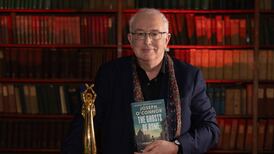Stephen Roche on Ben Healy: ‘The sky is the limit, and if I were him, I’d keep dreaming big’
Tour de France winner believes 24-year-old is yet to hit his prime

Join The Irish Times on WhatsApp and stay up to date
What’s making headlines in the rugby world? Listen to The Counter Ruck podcast with Nathan Johns
Sign up for push alerts to get the best breaking news, analysis and comment delivered to your phone










